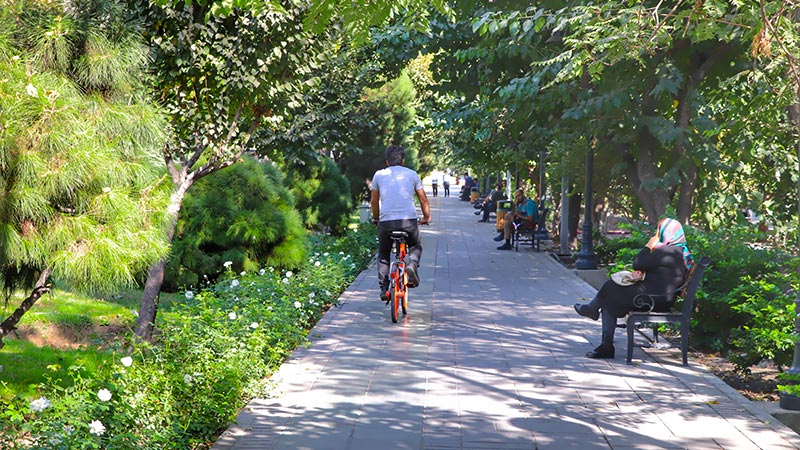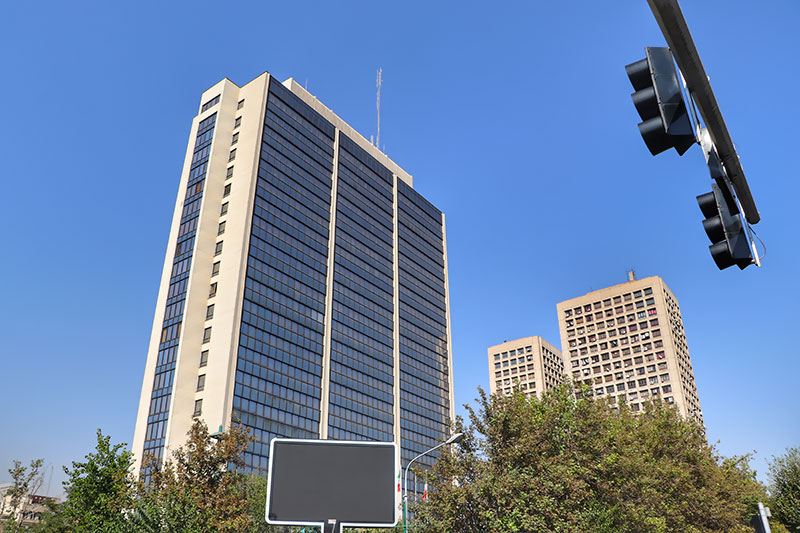 Signin with Google
Signin with Google Signin with Facebook
Signin with Facebook
 Places,History
Places,HistoryKeshavarz Boulevard, Tehran's most Favourite Avenue

This story is about a remarkable street that has an undeniable character and credit in Tehran, the capital of Iran. The boulevard became the first prominent new-style boulevard in Tehran in 1959 and changed names and eras thereafter. The boulevard saw and felt many faces of society. Karaj Water Boulevard, Elizabeth Boulevard and now Keshavarz Boulevard is a 1700-meter boulevard where these tales shaped.
Ever since the boulevard was built until now, it had a spirit that encourages passerby to take a walk in, to hear little water flow of channel, or watch daily life from boulevard’s seats. Even if you are passing by the car, it calls you to have a stop for minutes and daydream on a seat under old trees.

Transitioning a part of the Karaj River’s water to this region in order to provide the drinking water of Tehran, marked a big change for the former fields. And it was the beginning of a fashionable avenue in Paris avenues’ style.
“Haj Mirza Aghassi” (Prime minister of Mohammad Shah of Qajar) commissioned the stream to be built. However, he wasn’t alive enough to see the water flow here. Finally, in 1927 Pahlavi government approved this project and 4 years later, water flowed in the current boulevard location.
The new river was called “Karaj water” that was surrounded by two lines of trees on each side, a romantic place in the north of Tehran in the 1940s. In a praised contemporary Persian novel “Her eyes”, it is mentioned that the main characters spend their most romantic night beside Karaj River Boulevard. And in that time for many more couples, Keshavarz Boulevard was a stylish place to date. The Boulevard consisted of open fields on what were the outskirts of Tehran and had fresh weather. So that it became a place to take a leisurely walk after work or on weekends, which was a new hobby for Tehrani people.

South of the Boulevard was the heart of learning new science, “University of Tehran”. And “Jalalieh” garden, a vast field for horse racing and military parade, was located north of the Boulevard. (former field of “Farah Park”). Jalalieh garden was a significant political place for the Pahlavi government. In 1943, Reza Shah welcomed the “Big Three” allied in this square.
In honour of visiting Queen Elizabeth II, in 1960 the boulevard got a new name “Elizabeth Boulevard”. At a glance, the beautiful new buildings and the iconic design of the boulevard were charming. But the best parts of the boulevard for people were empty spaces which gave a place to look, think and dream about possibilities.
From Valiasr square, Valiahd before the Iranian revolution, in the east of the boulevard, there was a black and white tunnel that ended to the most famous club of Tehran, “Couchini” club. Couchini was a place for popular Persian music bands where the young generation experienced a new version of entertainment and euphoria there. Now there is a restaurant with the same name in that place.
By opening “Farah Park” (Laleh Park)in 1966, which was the first modern park of Tehran, “Saman Towers” and the first residential towers of Tehran, and so many cafes, gradually Elizabeth Boulevard became an absorbing route for every passer. Especially at weekends, it was a place for performing many artists. In the diaries of many artists, is mentioned of the beautiful boulevard's nights, poet and songwriters repeatedly referred to Boulevard in their writings.

After building the first cinema in Tehran, “Cinema Boulevard”, the collection was completed. The boulevard became so desirable that each Persian movie had the main role. Cinema Boulevard was a memorable place and always full. The first film club of Iran was shaped there by students and was a good place for hanging out of open-minded communication. Also, there was children’s favourite place as they saw the first animations and cartoons in Cinema Boulevard.

But these beautiful days full of joy and euphoria is not the whole story of the Boulevard. As it’s mentioned, Boulevard reaches the north of Tehran University, where the most passionate and also protester students grow. It was a few steps away from the boulevard where students protest against oppression, political arrests and demand free elections. The Boulevard was the best place to show their resentment to society.
As the city expanded, Elizabeth Boulevard became the heart of a city where conflicts were increasing day by day and the social level distance to the south and north of the city was becoming greater. That was the beginning of riots against the ruling governors and the fire of revolution.
Elizabeth Boulevard was a new image of modern Tehran. The idol of this modernity was the tallest building on the boulevard. A tower people used to call Glassy Tower that was an evolution in modern Persian architecture was the agriculture ministry headquarter. Despite the fact that people didn’t like capitalism, Elizabeth wasn’t a suitable name for this boulevard anymore and revolutionaries changed the boulevard’s name to Keshavarz.

The intersection of “Keshavarz” (the farmer) boulevard with “Karegar” (worker) street was named “Hammer and Sickle”. Also “Farah” park changed its name to “Laleh” park (Tulip) as a sign of martyrs’ blood.
In 1978 the war between Iran and Iraq began. Everyone wore clothes of war, including the boulevard. Those years passed with war and dread, but finally passed and a new era started for the boulevard. Everything had changed, yet the boulevard was still a strategic place in Tehran where new aggregations were held there. The most important one was Friday Prayer.
The boulevard saw many faces of Tehran in 60 years and is still watching. Due to its important role during these years, it is declared as a national heritage of Iran. And recently due to its designer demand, a certificate is mounted at the beginning of the boulevard which shows information about it.
After building the “Amirkabir Dam” water flow almost cut out, and now the Water and Sewerage Department of Tehran controls the channel’s water. However, it still feels the same. As night falls, the boulevard is full of light which changes colour brightly. Just like the way days changed colour in the Boulevard’s eye. And in daylight, the boulevard is doing its duty as it’s always been.

By Reyhaneh Jafari / TasteIran

